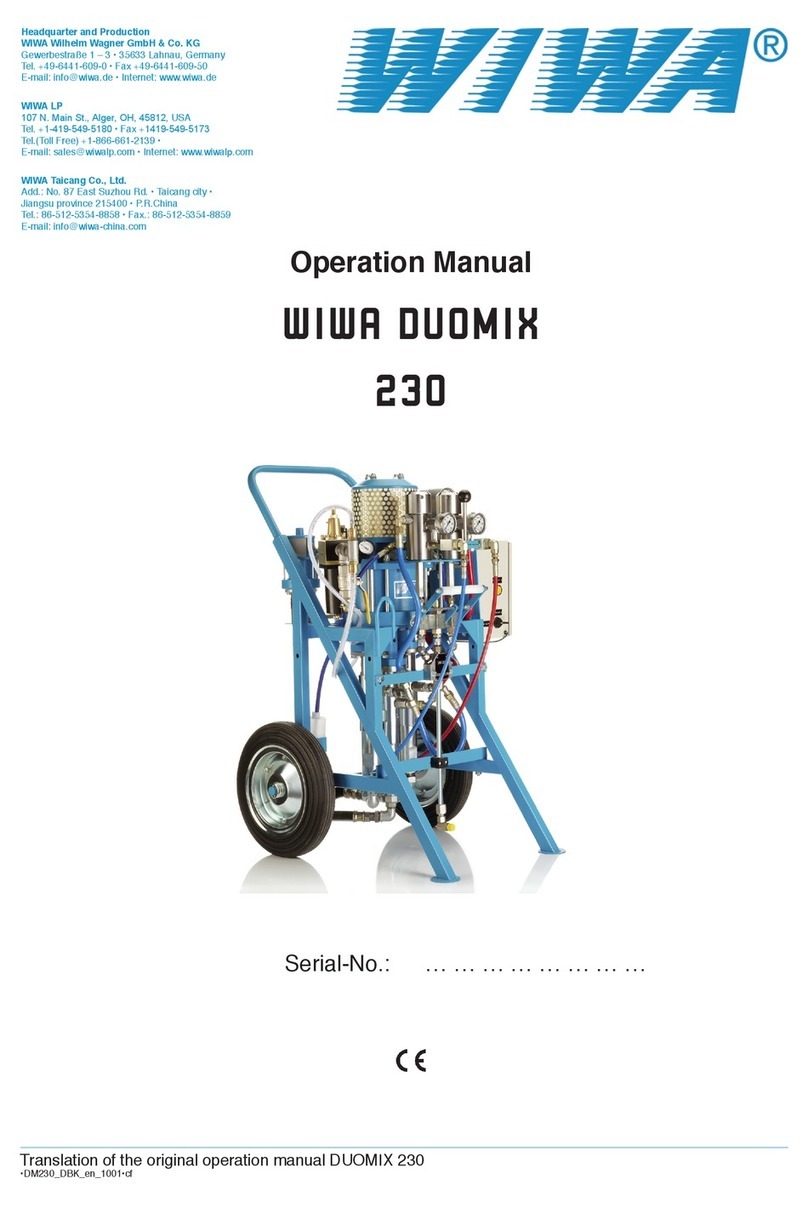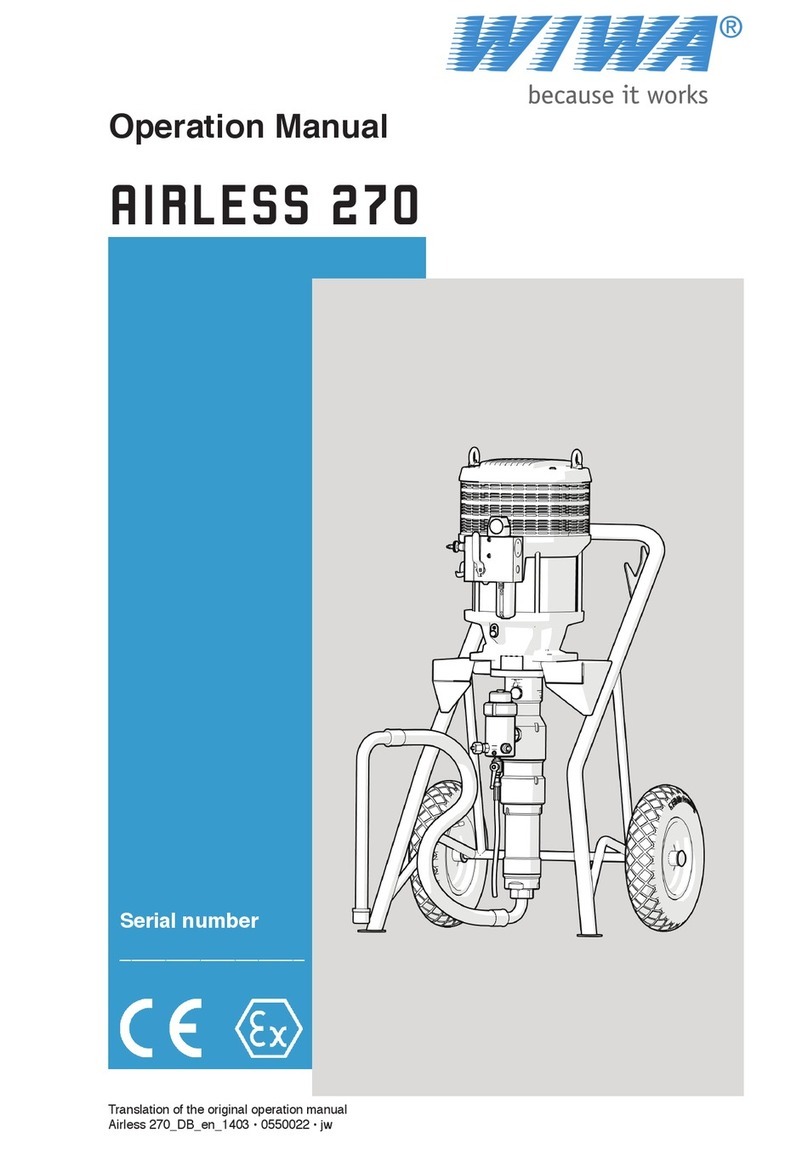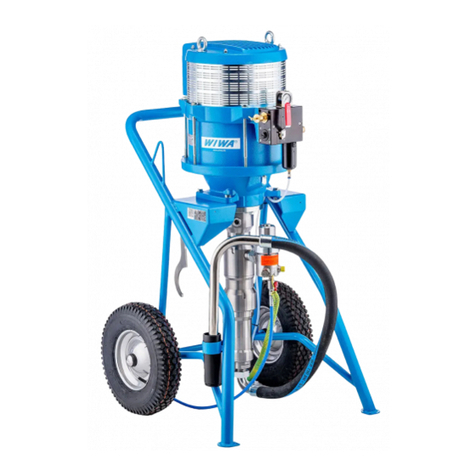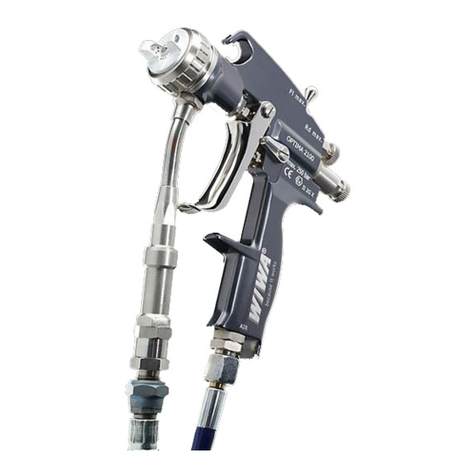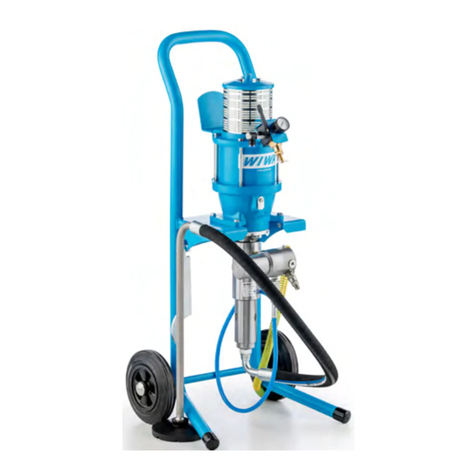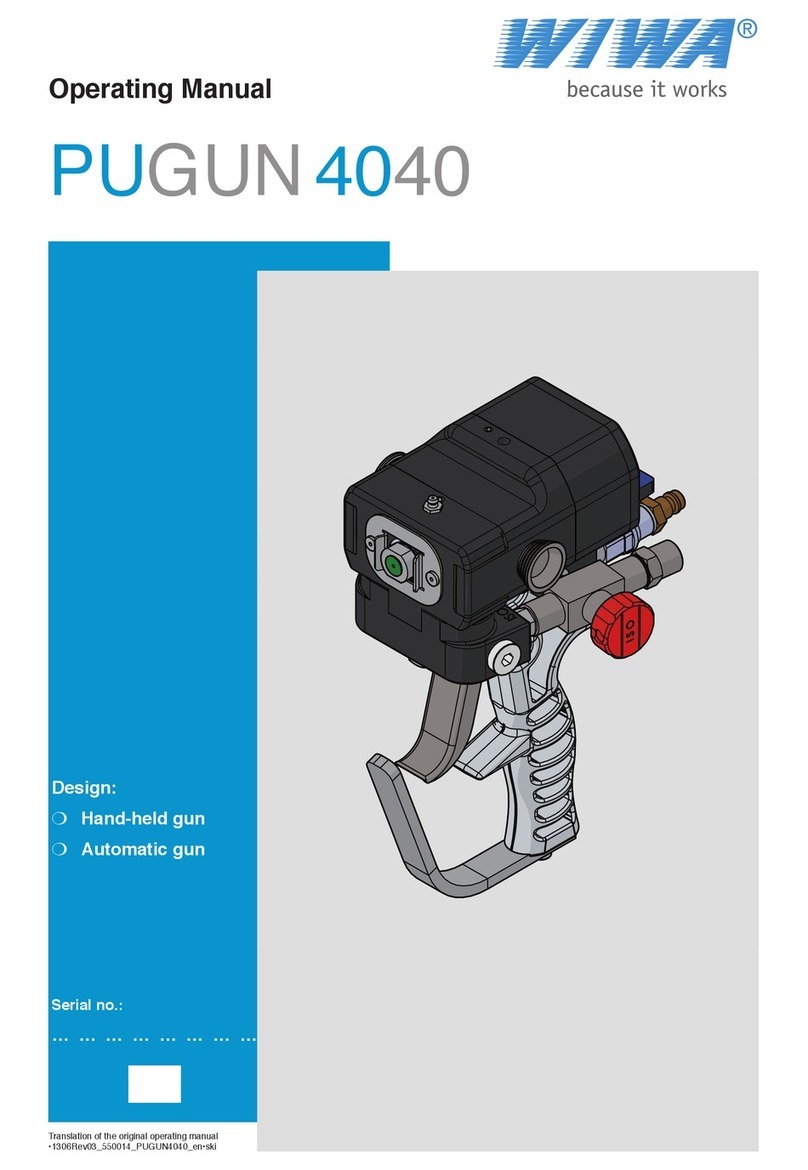
Contents
4 Translation of the original operation manual AIRCOMBI
AirCombi_BAoDB_en_1405 • jw
3.5 Optional expansion parts and accessories............................................25
3.5.1 AirCombi spray gun .....................................................................25
3.5.2 Material uid heater .....................................................................25
3.5.3 Agitator.........................................................................................25
4 Transport, installation and assembly....................................................26
4.1 Transportation........................................................................................26
4.2 Installation location ................................................................................26
4.3 Assembly ...............................................................................................27
4.3.1 Mounting the wall bracket (optional) ............................................28
4.3.2 Assembling spray hose and atomizer air hose ............................28
4.3.3 Grounding the unit .......................................................................29
4.3.4 Connect compressed air..............................................................29
5 Operation.................................................................................................31
5.1 Commissioning the unit .........................................................................31
5.2 Spraying ................................................................................................32
5.2.1 Adjusting the spraying pressure...................................................32
5.2.2 Hints for achieving good coating results......................................33
5.3 Flushing .................................................................................................34
5.4 Material change .....................................................................................35
5.5 Releasing pressure................................................................................35
5.6 Interruptions to work ..............................................................................36
5.7 Decommissioning ..................................................................................36
5.8 Disposal.................................................................................................36
6 Maintenance ............................................................................................37
6.1 Regular inspections ...............................................................................38
6.2 Maintenance plan ..................................................................................38
6.3 Maintenance unit ...................................................................................39
6.3.1 Checking the lubricant level in the fog oiler .................................39
6.3.2 Checking and adjusting the fog oiler...........................................40
6.3.3 Checking and cleaning the water separator ...............................40
6.4 High pressure pump ..............................................................................40
6.4.1 Topping up release agent ............................................................40
6.4.2 Checking the release agent for material residue .........................40
6.5 High pressure lter ................................................................................41
6.5.1 Removing the lter element .........................................................41
6.5.2 Cleaning the lter element ...........................................................43
6.5.3 Filter elements for high pressure lters........................................43
6.6 Recommended operating materials.......................................................44
6.7 Special tools ..........................................................................................44


